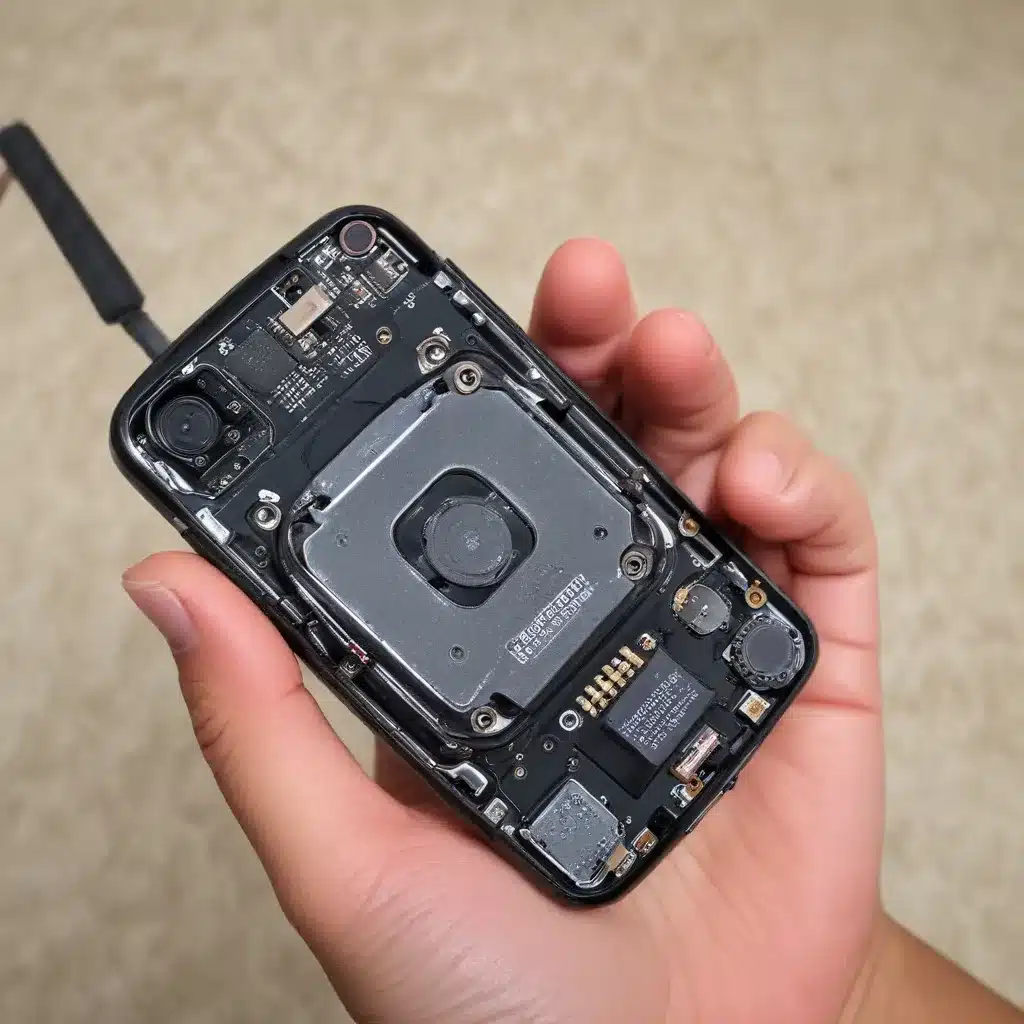
Understanding Smartphone Haptic Feedback
Haptic feedback is a crucial aspect of modern smartphone user experiences, providing tactile responses that enhance interactions and improve usability. When you tap on an app icon, slide your finger across the screen, or receive a notification, the vibration motor inside your device translates these actions into physical sensations, creating a more immersive and responsive interface.
However, as smartphones become more advanced, their delicate internal components can sometimes fall victim to malfunctions or wear and tear. One of the most common issues users face is a faulty vibration motor, leading to a loss of satisfying haptic feedback and a diminished overall user experience.
Diagnosing a Problematic Vibration Motor
If you’ve noticed a significant decrease in the strength or responsiveness of your smartphone’s haptic feedback, it’s likely that the vibration motor is the culprit. Here are some common symptoms to watch out for:
- Weak or muted vibrations: The vibrations you feel when using your device may feel significantly softer or less pronounced than they once were.
- Delayed or out-of-sync feedback: The haptic responses may not align with your interactions, occurring after a noticeable delay or feeling disconnected from your gestures.
- Intermittent functionality: The vibration motor may work inconsistently, cutting out randomly or only functioning in certain scenarios.
- Audible clicking or rattling sounds: Some users report hearing unusual noises, such as a subtle clicking or rattling, when the vibration motor is activated.
If you’re experiencing any of these issues, it’s highly likely that the vibration motor component inside your smartphone is malfunctioning and in need of replacement.
Preparing for the Repair
Before you dive into the repair process, it’s essential to ensure you have the necessary tools and equipment on hand. Depending on your device’s make and model, you may need the following:
- Screwdrivers: You’ll likely need a precision screwdriver set, including both Philips and flathead bits, to access the internal components of your smartphone.
- Tweezers: These delicate tools will help you handle and manipulate small parts during the disassembly and reassembly process.
- Adhesive or glue: You may need a small amount of adhesive or glue to securely reinstall the new vibration motor.
- Replacement vibration motor: Ensure you have the correct replacement part for your specific smartphone model. Consult your device’s manufacturer or a reputable online parts retailer to obtain the correct component.
Disassembling Your Smartphone
The process of replacing a vibration motor can vary depending on your smartphone’s design, but the general steps are as follows:
-
Power off your device: Before beginning the disassembly, power off your smartphone to minimize the risk of damage during the repair.
-
Remove the back cover: Carefully remove the back cover or rear panel of your device, exposing the internal components.
-
Locate the vibration motor: The vibration motor is typically located near the bottom of the smartphone, often secured to the motherboard or a separate component.
-
Disconnect the vibration motor: Use your precision screwdrivers and tweezers to carefully disconnect the vibration motor from its wiring and any other components it may be attached to.
-
Remove the old vibration motor: Gently pry or lift the old vibration motor out of its housing, taking care not to damage any surrounding components.
Installing the Replacement Vibration Motor
-
Prepare the new vibration motor: Ensure the replacement part is compatible with your smartphone model and that it is free of any damage or defects.
-
Position the new vibration motor: Carefully place the new vibration motor in the designated location, aligning it with the mounting points and any necessary connectors.
-
Secure the vibration motor: Use your adhesive or glue to firmly secure the new vibration motor in place, ensuring it is properly seated and free of any gaps or misalignment.
-
Reconnect the wiring: Carefully reconnect the vibration motor’s wiring to the appropriate connectors, making sure the connections are secure and properly seated.
-
Reassemble your smartphone: Carefully replace any other components you removed, ensuring everything is properly aligned and secured, and then replace the back cover of your device.
Verifying the Repair
After completing the replacement, power on your smartphone and test the haptic feedback to ensure it’s functioning correctly. Try various actions, such as tapping on the screen, using the volume buttons, or receiving notifications, and observe the vibration response.
If the haptic feedback still feels weak, inconsistent, or out of sync, you may need to repeat the disassembly and reassembly process to double-check your work. Ensure all connections are secure and the new vibration motor is properly installed.
If the issue persists, it’s possible that the problem lies elsewhere in your device’s hardware or software. In such cases, you may need to seek further assistance from the manufacturer or a professional repair service.
Conclusion
Restoring the haptic feedback on your smartphone by replacing a malfunctioning vibration motor can be a delicate and intricate process, but it’s a valuable skill for any seasoned IT professional. By following the steps outlined in this guide, you can help your clients or customers regain the satisfying tactile experience they’ve come to expect from their modern mobile devices.
Remember, it’s always essential to work carefully, use the right tools, and proceed with caution when handling sensitive electronic components. With the proper preparation and attention to detail, you can successfully breathe new life into a smartphone and revive its haptic feedback, ensuring a seamless and engaging user experience.
If you’re interested in learning more about smartphone repair and IT solutions, be sure to check out the resources available on IT Fix. Our team of experts is dedicated to providing practical, in-depth guidance to help you stay ahead of the curve in the ever-evolving world of technology.












